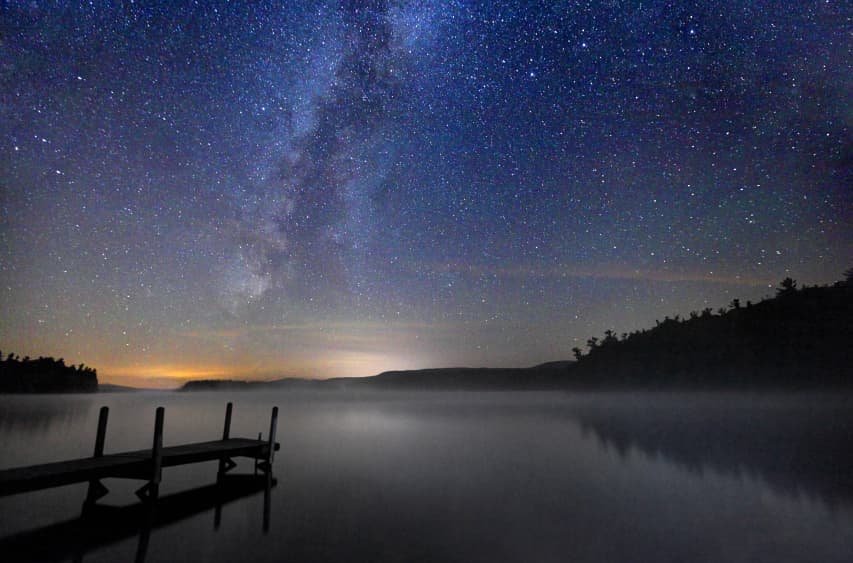A great lens for astrophotography will aid your mastery of one of the most challenging and rewarding genres of photography. Capturing images of the night sky of stars and planets requires patience, technical precision and a bit of luck with the weather. Crucially, it also requires the right kit; a suitable astro lens is essential to making images of the stars. We’ve compiled this astrophotography lens guide to help you find yours so you can improve your night photography. Our top rated full frame cameras are a good match for most of these lenses.
Your camera system and its sensor size will determine your choices to some extent. If you don’t have your camera yet, see our guide to the best cameras for astrophotography. Different lenses fit different lens mounts, and some only work with certain sensor sizes. We’ve based this list on our experience testing all sorts of different lenses – these are the top ones our team recommends.
If you need a primer on astrophotography, there is help on how to choose a lens at the bottom of this page. Now for the lenses…
The best lenses for astrophotography: our quick list
Here is a quick reference list of our picks for the best astrophotography lenses, along with links to the best deals.
Best full-frame lenses for astrophotography:
- Best Nikon F-mount: Nikkor AF-S 14-24mm f/2.8G ED – Buy now
- Best Nikon Z-mount: Nikkor Z 14-24mm f/2.8 S – Buy now
- Best Canon EF-mount: Canon EF 14mm f/2.8L II USM – Buy now
- Best Canon RF-mount: Canon RF 15-35mm F2.8L IS USM – Buy now
- Best Sony FE-mount: Sony FE 12-24mm F2.8 GM – Buy now
- Best Pentax K-mount: Pentax-D FA HD 15-30mm F2.8 ED SDM WR – Buy now
- Best L-mount: Panasonic Lumix S 20-60mm f/3.5-5.6 – Buy now
- Best third party DSLR lens: Sigma 14mm f/1.8 DG HSM Art – Buy now
- Best lens under £500: Rokinon / Samyang 14m8-m f/2.8 ED AS IF UMC – Buy now
Best APS-C lenses for astrophotography:
- Best Fujifilm X-mount: Fujinon XF 8-16mm f/2.8 R LM WR – Buy now
- Best third-party Fujifilm X-mount: Sigma 16mm F1.4 DC DN C – Buy now
- Best Sony E-Mount: Sony E 11mm f/1.8 – Buy now
- Best APS-C DSLR lens: Tokina atx-i 11-20mm F2.8 CF Plus – Buy now
Best Micro Four Thirds lenses for astrophotography:
- Best Olympus lens: Olympus M.Zuiko Digital ED 7-14mm f/2.8 Pro – Buy now
- Best third party MFT lens: Laowa 7.5mm f/2 – Buy now
So without further ado, here’s our guide to the best lenses for astrophotography…
Why you can trust Amateur Photographer
We spend many hours testing every product we recommend, in detail, in a variety of situations and shooting scenarios, and only use experts for our reviews, so you can be sure that you’re getting the best products. Find out more about our expert writers.
Best full-frame lenses for astrophotography
Here, we’ve selected the best astrophotography lenses for mirrorless systems. Hence, there are options for Canon and Nikon (both DSLR and mirrorless), as well as Sony FE-mount and the Leica L-mount, which covers Panasonic’s Lumix S series of full-frame mirrorless cameras. We’ve included a mix of manufacturers’ own options as well as some third-party alternatives.
Best Nikon F-mount lens
Best Nikon F-mount lens for astrophotography: Nikkor AF-S 14-24mm f/2.8G ED

Amateur Photographer verdict
Nikon’s gorgeous pro wide zoom for its DSLRs, the 14-24mm is a sublime choice for astro work. It’s weather-sealed for outdoor work, and has the potential to produce dazzling imagery.- Lovely wide field of view
- Constant f/2.8 aperture
- Tough, weather-sealed build
- Sharpness drop-off at edges and corners
- Can’t attach filters
At a glance:
- Aperture range f/2.8 to f/22
- 1,000g weight
- 14 elements in 11 groups
- Built-in lens hood
- Price: $1,097 / £1,570
The most suitable full-frame Nikon DSLR lens has to be its long-standing workhorse wide-angle lens, the AF-S 14-24mm f/2.8G ED. Regarding fixed focal length lenses, Nikon’s widest offering is the 20mm f/1.8G ED, which is an excellent landscape photography lens and could be a curveball alternative for night skies.
One of the f/2.8 trio of lenses so popular with professional photographers, the weighty 14-24mm is a super tough metal lens that boasts rubber sealing to protect against dust and moisture. It also has a built-in lens hood, but with no filter thread. When pushed to its limit – as astrophotographers will do – there is the expected fall-off in corner detail and brightness, but overall, this professional lens comprising 14 elements in 11 groups delivers optically.
Best Nikon Z-mount lens
Best Nikon Z-mount lens for astrophotography: Nikkor Z 14-24mm f/2.8 S
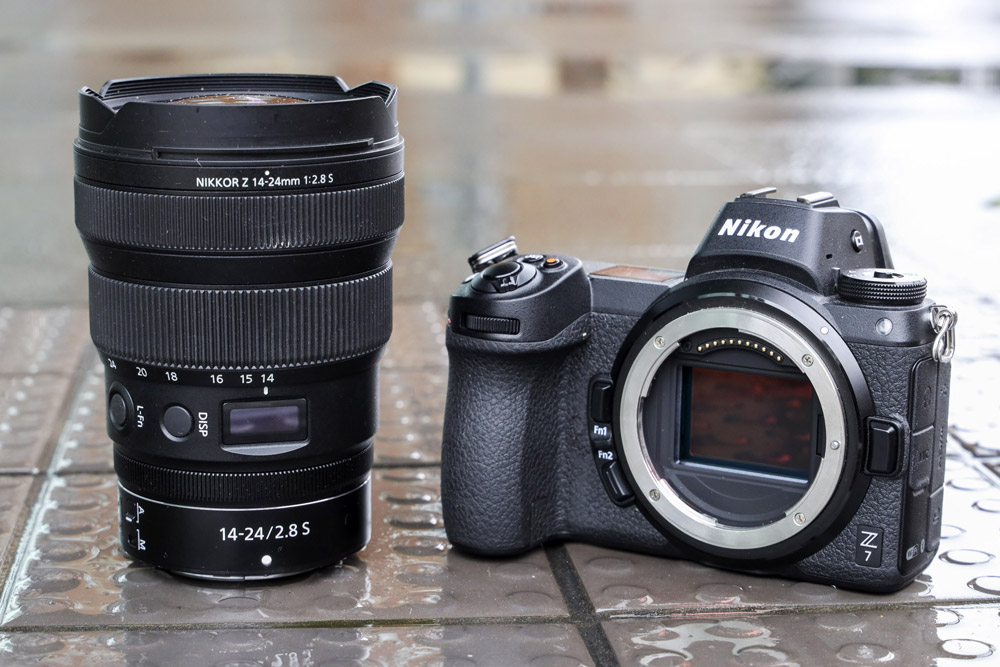
Amateur Photographer verdict
Lighter than its DSLR equivalent, with better optics at wide apertures, the Z-mount 14-24mm lens is a no-brainer for any astro shooter using Nikon mirrorless.- Edge-to-edge sharpness
- Customisable control ring
- Weather sealed
- Lighter than DSLR version
- Very pricey
- Control ring can be over-sensitive
At a glance:
- Aperture range f/2.8 to f/22
- 16 elements in 11 groups
- Specialised lens hood with 112mm filter thread
- Only 650g
- Price: $2,696 / £1,949
As things stand, it’s a copy/paste job from Nikon’s DSLRs for its Z-mount mirrorless cameras that makes our pick of astrophotography lenses. But this Z 14-24mm f/2.8 benefits from the larger Z-mount design, enabling Nikon to create a lens that performs better optically than its DSLR equivalent, in the corners and when using wide apertures. Bingo for astrophotography, and less work in post production.
It’s also a much smaller and lighter lens at only 650g – yet extensive weather-sealing and fluorine coating on the front lens element stands the lens in good stead for night photography adventures. Again, if you know 20mm is wide enough for night sky pictures, then the Z 20mm f/1.8 S lens is a more cost effective alternative with 1.3EV brighter maximum aperture. We’d more happily use the maximum aperture in a Z-mount lens too, and so the Z 14-30mm f/4 S is not out of the question for astrophotography, either.
Read our Nikon Nikkor Z 14-24mm f/2.8 S review.
Best Canon EF-mount lens
Best Canon EF-mount lens for astrophotography: Canon EF 14mm f/2.8L II USM
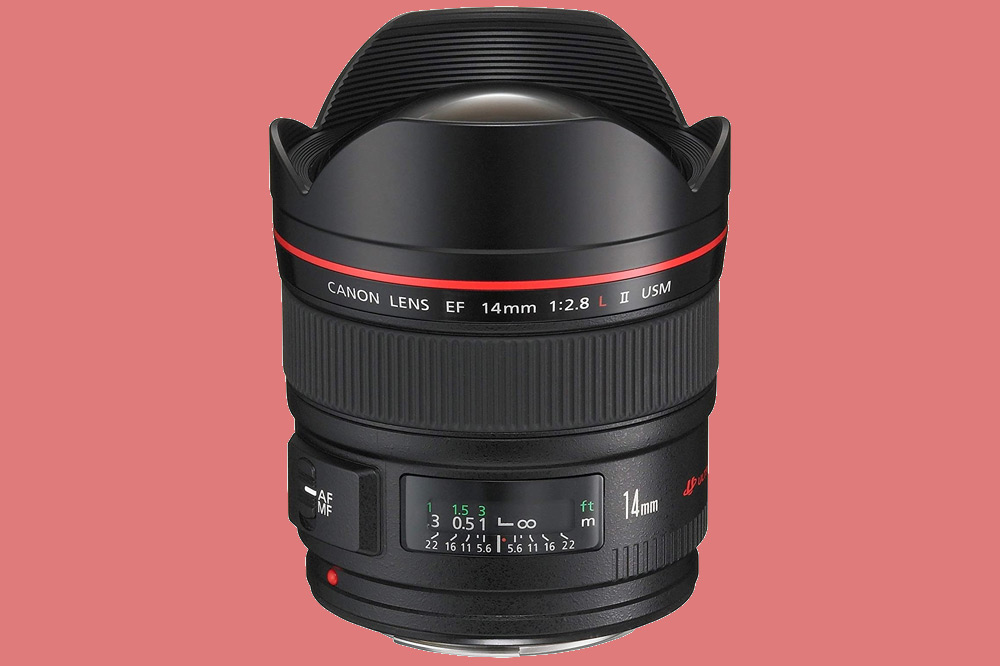
Amateur Photographer verdict
A specialised wide prime, this Canon DSLR lens hits a sweet spot for astrophotography. With a sophisticated rectilinear design, it delivers top-notch sharpness with a wide field of view.- Rectilinear design prevents chromatic aberrations
- Solid build
- Excellent centre sharpness
- Good value if bought used
- Loses sharpness at edges
At a glance
- Aperture range f/2.8 to f/16
- Rectilinear design
- 645g
- Dust and moisture sealing
- Price: approx $2,099 / £2,195
This prime is something of a specialist lens – a 14mm prime is best used for specific applications; astrophotography being one of them. This lens has an ‘L’ designation, and if you’re not familiar with Canon’s various acronyms, that means it’s constructed with a robust build quality that is well-suited for shooting in inclement conditions. It also means the lens is optically excellent.
With a construction consisting of 14 elements in 11 groups, the Canon EF 14mm f/2.8L II USM features a rectilinear design, which means it produces much less distortion than wide-angle lenses that use a fisheye design. In layman’s terms, this means excellent sharpness in images from edge-to-edge, with no chromatic aberrations to speak of. This is just what you want to hear when you’re planning on filling the frame with pin-point stars.
For a bit more compositional flexibility, you could try Canon’s EF 16-35mm f/2.8L III USM, though it’s rather more expensive and doesn’t go quite as wide. The EF 11-24mm f/4L USM does, though it’s also pretty pricey. For an alternative that won’t rinse your bank account, the Samyang 14mm f/2.8 is available for Canon EF mount; you’ll meet it below as one of our picks of the best third-party lenses.
Best Canon RF-mount lens
Best Canon RF-mount lens for astrophotography: Canon RF 15-35mm F2.8L IS USM
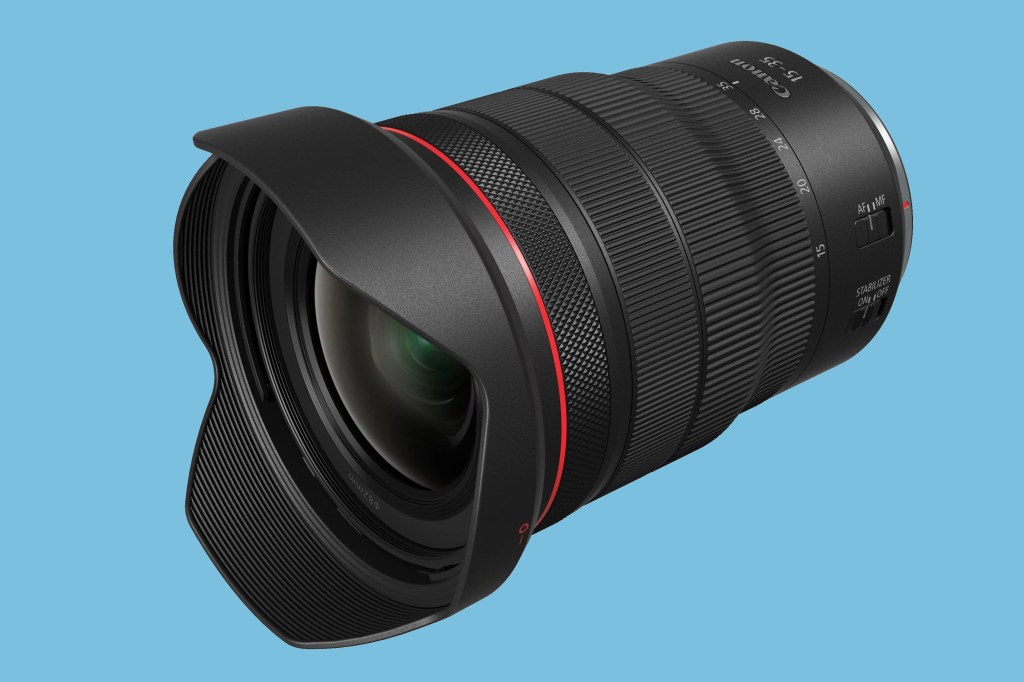
Amateur Photographer verdict
An outstanding pro-grade wide zoom, the Canon 15-35mm F2.8L wide-angle zoom benefits from a weatherproof construction, a 5-stop stabiliser and pin-sharp optics for great astrophotography results.- Rugged design
- Can take 82mm filters
- Constant f/2.8 aperture
- Astonishing sharpness
- Compatible filters quite pricey
- Some may want a wider FOV
At a glance:
- Aperture range f/2.8 to f/22
- 82mm filter thread
- 840g
- 5EV image stabilisation
- Price: $2,199 / £2,299, (£1,755 used)
The Canon 15-35mm F2.8L wide-angle zoom lens is wide enough and a fine choice for astrophotography, with a larger maximum aperture than the recent RF 10-24mm f/4.
It boasts L-Series ruggedness for night-time projects, a 5-stop image stabiliser, silent Nano USM autofocus motor, plus you even get an 82mm filter thread; so it’s a lens that can easily double up for landscape photography and the like where filters are necessary. With a complex optical design featuring 16 elements in 12 groups, this is sure to prove a workhorse lens for wide-angle lovers.
Best Sony FE-mount lens
Best Sony FE-mount lens for astrophotography: Sony FE 12-24mm F2.8 GM
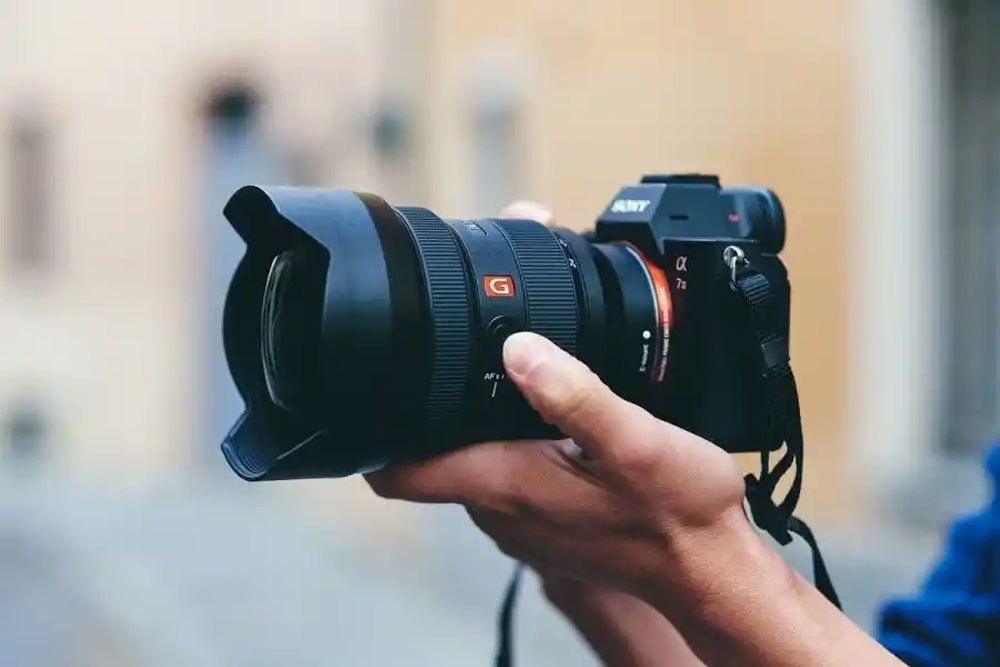
Amateur Photographer verdict
It’s expensive, but there’s nothing else out there like it – Sony’s 12-24mm G Master is nothing short of spectacular, with stellar sharpness out to the edges for perfect for astronomical imaging.- Gorgeous optical quality
- Widest-ever zoom with constant f/2.8
- Lightweight, considering
- Double the price of f/4 version
At a glance:
- Aperture range f/2.8 to f/22
- 847g
- 17 elements in 14 groups
- Sony FE mount
- Price: $3,098 / £2,699
Of all lens mounts, full-frame Sony mirrorless cameras are afforded the greatest choice of wide-angle, wide-aperture lenses. We could have picked any Sony FE lens from the 12-24mm f/2.8, 14mm f/1.8, 16-35mm f/2.8, or the 12-24mm f/4 – all of which are great lenses.
However, we landed on the 12-24mm F2.8 GM lens as the most versatile option, albeit the most expensive. At twice the price of the F4 version, it’s for serious astrophotographers with deep pockets, for whom low light performance is everything. It has the widest angle lens of its kind with constant f/2.8 aperture throughout the zoom range.
Unsurprisingly, there is no filter thread given the widest 12mm focal length, but this is a relatively lightweight full-frame lens at 847g. It pairs well with a camera like the Sony A7 IV, which features in our best cameras for astrophotography guide. Being a G Master lens (GM), the 12-24mm f/2.8 is extremely well-built and optically very sharp – even wide open and from centre to edges. Sony-showmanship at its finest! If 14mm is your focal length, then the Sony FE 14mm f/1.8 is an all-round better option.
Best Pentax K-mount lens
Best Pentax K-mount lens for astrophotography: Pentax-D FA HD 15-30mm F2.8 ED SDM WR

Amateur Photographer verdict
Pentax DSLRs are an excellent choice for astrophotography, and this wide zoom makes for a great pairing. A few handling quirks aside, it’s sharp, fast and weatherproof.- Excellent weatherproofing
- Great sharpness throughout frame
- Constant f/2.8 aperture
- Manually focuses in opposite direction to other Pentax lenses
- On the bulky side
At a glance:
- Aperture range f/2.8 to f/22
- 1040g
- Weather-resistant
- 23-45mm in APS-C crop mode
- Price: $1,087 / £1,100
We’re not exactly spoilt for choice with Pentax wide-angle lenses, which is a shame because the cameras do night photography so well. However, you only need one lens that does the job, and the Pentax 15-30mm F2.8 is a fine choice.
Launched around the same time as the Pentax K-1 in 2016, it’s a reassuringly bulky lens at just over 1kg. There is no filter thread (not that you will use screw-in filters for astrophotography), but it is weather resistant and therefore a solid pairing with a tough camera like the Pentax K-1 and its replacement the K-1 II.
Benefitting from a lens construction of 18 elements in 13 groups, users report a high and even sharpness from centre to edges – even at the maximum f/2.8 aperture. This aperture is available throughout the entire zoom range, too. What may initially cause confusion to Pentax shooters fumbling around in the dark to manually focus the 15-30mm lens, is that it focuses in the opposite direction to every other Pentax lens. Go figure.
Best L-mount lens
Best L-mount lens for astrophotography: Panasonic Lumix S 20-60mm f/3.5-5.6
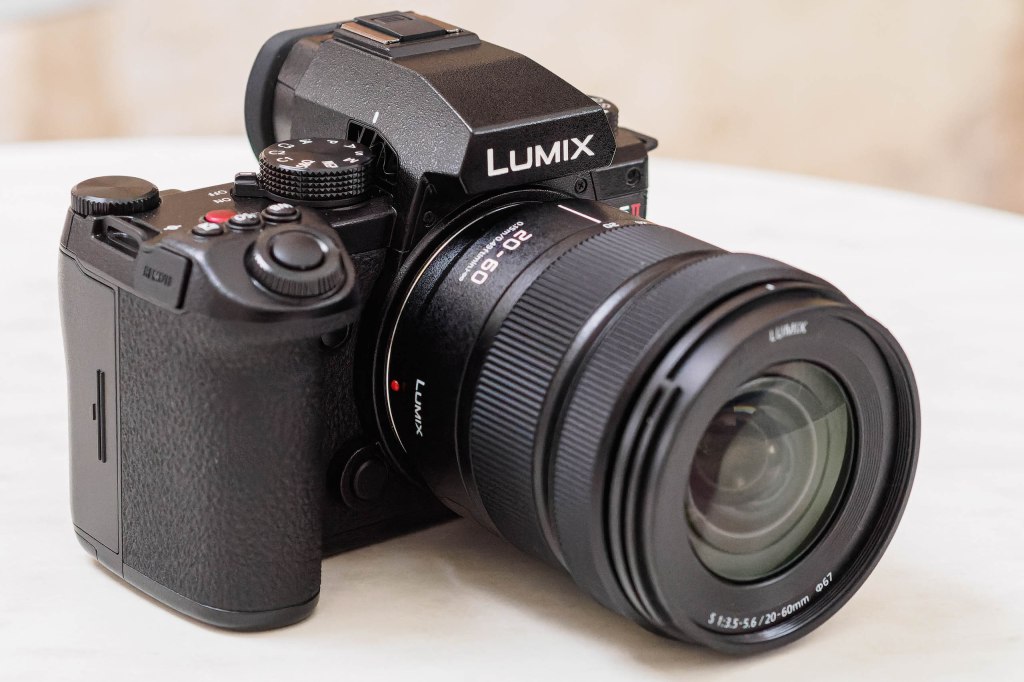
Amateur Photographer verdict
This lightweight lens allows you to kit your L-mount camera out for astrophotography without breaking the bank – and it delivers great image quality, too.- Weighs next to nothing
- Impressive sharpness
- Resistant to dust and moisture
- Nice and affordable
- f/3.5 may be limiting for some
At a glance:
- Maximum f/3.5 aperture at 20mm
- 350g
- 11 elements in 9 groups
- 67mm filter thread
- Price: $598 / £479
In what feels like a curveball entry, the Panasonic Lumix S 20-60mm f/3.5-5.6 is the only ‘kit’ lens in this roundup (available with the Panasonic S5 that features in our best astrophotography cameras guide). There is a lack of alternatives for full-frame Panasonic cameras, with the 16-35mm f/4 lens being another option. However, we’ve primarily included the 20-60mm because it is a wider-than-normal kit lens, with its widest focal length particularly ideal for astrophotography.
Given most astrophotographers will use the widest 20mm focal length, the maximum f/3.5 aperture is reasonable enough. (The same principle goes for other kit lenses, though they are unlikely to be as wide as this one). And as far as kit lenses go, the 20-60mm is surprisingly well built with dust and moisture resistance and it weighs only 350g – that’s nothing for a full-frame lens. It’s also impressively sharp, even with its relatively straightforward lens construction of 11 elements in 9 groups.
Best third-party DSLR lens
Best third-party DSLR lens for astrophotography: Sigma 14mm f/1.8 DG HSM Art
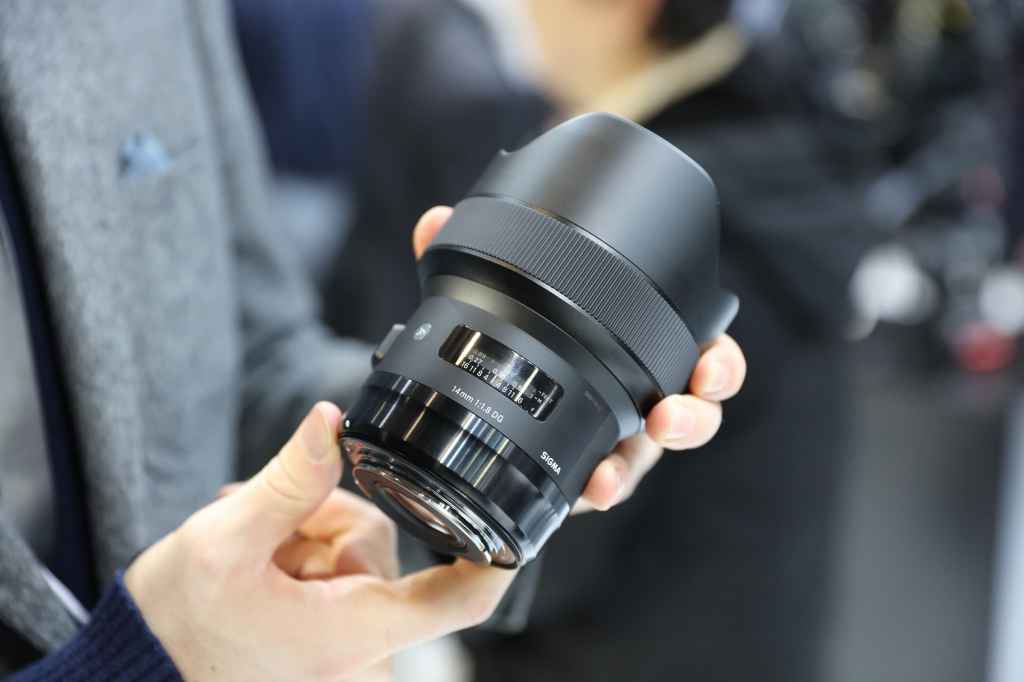
Amateur Photographer verdict
It’s a big lad, but Sigma’s 14mm f/1.8 is a brilliant option across multiple mirrorless and DSLR mounts. Its wide focal length and fast aperture earn it big points for astro – and boy, is it sharp!- Very good sharpness out to edges
- Relatively rare focal length
- Extra latitude from f/1.8
- Not officially weather sealed
- It’s a big boy
At a glance:
- Aperture range f/1.8 to f/16
- 1170g
- 1.3EV brighter than f/2.8
- Available in Canon EF, Nikon F, Sony FE/ E, and L-mount
- Price: $1,249 – $1,599 / £1,100
A toss up between the Sigma 14mm f/1.8 and the Sigma 14-24mm f/2.8, we’ve gone for the 14mm f/1.8 lens because there are equivalent 14-24mm f/2.8 Canon and Nikon DSLR lenses available, whereas you won’t find a proprietary 14mm f/1.8 lens apart from Sony’s excellent offering. Available in Canon EF, Nikon F, Sony E, and L-mount, this gargantuan lens boasts an ultra-bright maximum aperture and ultra-wide fixed focal length.
We find a lot of astrophotographers like the wider 14mm focal length. In this lens, you gain an extra 1.3EV of light with that f/1.8 aperture compared to f/2.8, making it completely possible to shoot night skies at ISO 200! Being dedicated for purpose, this ultra-wide lens is impressively sharp from centre to edges. Sigma Art lenses are extremely well built, too, though none officially feature weather-resistance.
Best lens under £500
Best lens under £500 for astrophotography: Rokinon / Samyang 14mm f/2.8 ED AS IF UMC

Amateur Photographer verdict
While an autofocus version has arrived, save yourself some cash and stick with the original Samyang 14mm f/2.8. Compatible with lots of mounts, it’s a good choice for budget astrophotographers.- Terrific value for money
- Good sharpness
- Broad mount compatibility
- No weather sealing
- No hyperfocal distance scale or hard infinity stop
At a glance:
- Aperture range f/2.8 to f/22
- Manual focus
- 530-575g
- Available in Canon EF, Nikon F, Sony E, Pentax K, Fujifilm X, MFT, Canon M, Sony A mounts
- Price: around $230 – $270 / £165 – £260
A supremely popular lens among astrophotographers, the Samyang 14mm f/2.8 is an excellent value wide-angle, wide-aperture manual focus lens. It is available for a number of lens mounts, and, where available, we recommend the ‘AE’ version with electronic contacts that provide auto exposure and exposure information (metadata).
Handling-wise, the lens lacks weather-sealing, nor does it feature a hyperfocal distance scale or hard infinity stop. Otherwise, for image quality alone you get unparalleled bang for buck.
Samyang ushered in a new dawn by making an autofocus version of this lens for Canon, Nikon and Sony shooters, available for around twice the price. However, for astrophotography, autofocus is largely redundant. We’d stick with this one unless you intend it for various other purposes. Building on its popularity, there is also a premium ‘XP’ version for Canon and Nikon DSLR users, although this (still-good-value) version is a tasty £900.
Best APS-C lenses for astrophotography:
Using an APS-C system? We’ve picked out a selection of fantastic astrophotography lenses that are specifically optimised for crop-sensor cameras. Remember the 1.5x crop factor, meaning that a lens designated (for example) 24mm will actually behave like a 35mm when mounted to your APS-C camera.
Best Fujifilm X-Mount lens
Best Fujifilm X-Mount lens for astrophotography: Fujinon XF 8-16mm f/2.8 R LM WR

Amateur Photographer verdict
An ultra-wide lens for Fujifilm X, this hardy, professional zoom is ideally suited to astrophotography. It’s undeniably pricey, but justifies its expense.- Very sharp, even wide open
- Weather-resistant
- Constant f/2.8 aperture
- On the heavier side for Fuji X
- Still relatively expensive
At a glance:
- Equivalent 12-24mm focal length
- Aperture range f/2.8 to f/22
- 805g
- No filter thread
- Price: £1,800 / $1,499
Launched in 2019, the Fujifilm XF 8-16mm f/2.8 lens is one of the widest X-mount lenses available; a zoom lens with f/2.8 constant maximum aperture, to boot. This is even wider than the more recent ultra-wide prime lens from the Fujifilm camp, the Fujifilm XF 8mm F3.5 R WR. This zoom’s equivalent 12-24mm focal length is ideal for astrophotographers, as is the weather-resistant construction, denoted by the ‘WR’ in the lens nomenclature.
For an XF lens, 805g is on the weightier side. Perhaps it’s the complex lens construction of 20 elements in 13 groups. We’ve read reports of excellent optical sharpness even at f/2.8, albeit with a slight fall-off in the edges of the frame. The lack of filter thread might be a headache for landscape photographers, but astrophotographers can generally get by without filters.
Best third-party Fuji X lens
Best third-party astrophotography lens for Fuji X: Sigma 16mm F1.4 DC DN C

Amateur Photographer verdict
Highly affordable for Fuji and a host of other APS-C mounts, this Sigma prime lens impresses with its complex optical construction that delivers sharp astrophotography images with minimal coma.- Excellent suppression of aberrations/coma flare
- Superb value for money
- Nice big aperture
- No aperture ring
- Fixed 24mm quite narrow for astro
At a glance:
- Equivalent to 24mm focal length
- Available for: Fujifilm X, Sony E, Canon EF-M, Micro Four Thirds (equiv. 32mm)
- Constructed from 16 elements in 13 groups
- Weighs 405g
- Price: $485 (Fujifilm)- $510 (others) / £389 (Fujifilm) – £459 (others)
Sigma has expanded its line of fast-aperture, crop-sensor prime lenses to the Fujifilm X mount, which is great news for Fuji users looking for an affordable alternative. It’s a pretty sophisticated lens, sporting a complex optical construction that features three FLD (Fluorite Low Dispersion) glass elements and two SLD (Special Low Dispersion) glass elements, all of which are there to suppress chromatic aberrations. Also included are moulded glass aspherical elements that suppress curvilinear distortion and sagittal coma flare, the latter of which is particularly good news for astrophotographers.
With its equivalent focal length of 24mm, this is on the narrow side for an astrophotography lens, but is still perfectly useable. It delivers great sharpness throughout its aperture range; as we found in our review, you have to zoom in 100% to really see the difference at the extreme ends.
There’s also basically no vignetting, and what little there is should be ably corrected by Fujifilm’s in-camera software. It’s highly affordable, especially compared to native X-mount lenses, giving you a good cheap way to get started shooting astro images on your Fuji camera.
Read our full Sigma 16mm F1.4 DC DN C review.
Best Sony E-Mount lens
Best Sony E-Mount lens for astrophotography: Sony E 11mm f/1.8
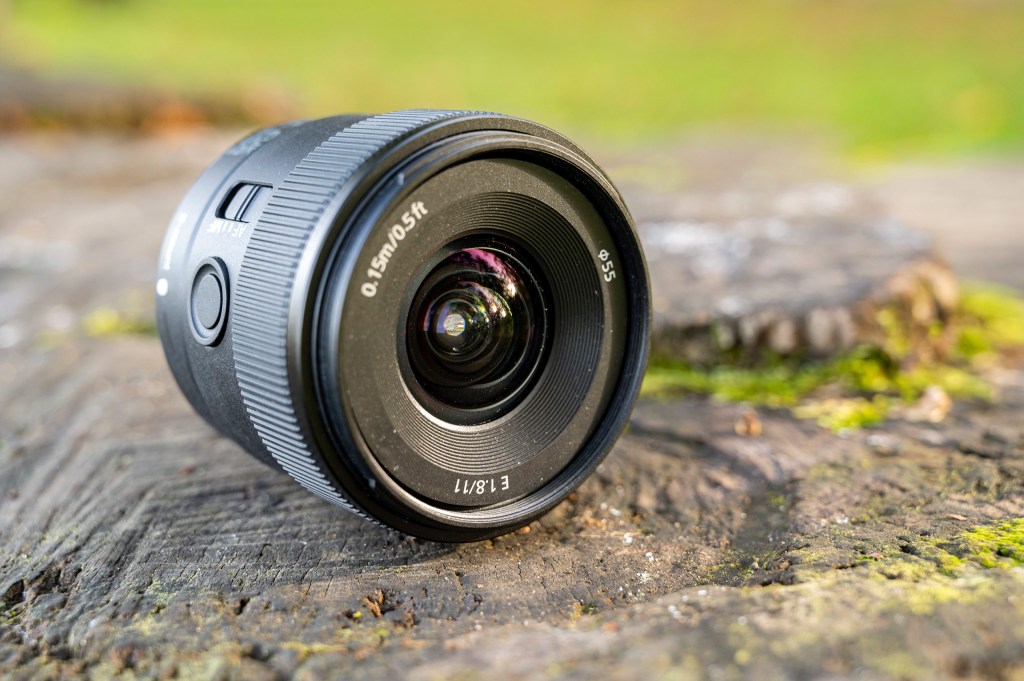
Amateur Photographer verdict
While this is designed to be a vlogging lens, its wide angle of view also makes it handy for astro work. Images look great – just bear in mind that the lens isn’t weather-sealed.- One of the widest Sony E primes
- Feather-light
- Solid value for money
- No optical stabilisation
At a glance:
- Equivalent 16.5mm focal length
- Aperture range f/1.8 to f/16
- Only 181g
- Available in Sony E mount only
- Price: $648 / £477
Released in 2022, the Sony E 11mm f/1.8 is a wide-aperture APS-C lens with equivalent 16.5mm focal length primarily marketed for vlogging, but incidentally is plenty wide enough for astrophotography. It is designed for Sony E mount cameras like the 6000-series, and being a miniscule 66mm in length and feather-light 181g, it represents a compelling option for those that don’t want to be bogged down with heavy kit.
You won’t get the same level of weather-sealing in this dust and moisture-resistant autofocus lens when paired with a Sony 6000-series camera, but it’ll cope just fine with your regular night adventures. It packs 12 lens elements in 11 groups and despite its wide focal length will accept threaded filters, while its price tag of £500 represents decent value. You could also take a look at the Sony E 15mm F1.4 G if you don’t need something as wide.
Read our Sony E 11mm F1.8 review.
Best APS-C DSLR lens
Best APS-C DSLR lens for astrophotography: Tokina atx-i 11-20mm F2.8 CF Plus

Amateur Photographer verdict
An outstandingly good-value choice for APS-C DSLRs, Tokina’s lens offers a compelling alternative to anything made by Canon or Nikon. It’s weather sealed, which comes in handy for astro use.- Balances well on APS-C DSLRs
- Weather-sealed mounting ring
- Better value than Canon/Nikon’s own lenses
- No stabilisation (though this doesn’t matter so much for astro)
At a glance:
- Aperture range f/2.8 to f/22
- 82mm filter thread
- 550-570g (Nikon/Canon)
- Available in Canon EF and Nikon F mounts
- Price: from $410 / £460
The Tokina atx-i 11-20mm F2.8 CF Plus is a rare wide-angle, wide aperture zoom lens for APS-C DSLR cameras. This autofocus lens has an equivalent focal length of approximately 16.5-30mm for Nikon F and 17.6-32mm for Canon EF mounts. Optically complex, the lens construction features 14 elements in 12 groups. At 550-570g (Nikon/Canon), the 11-20mm balances well on mid-range DSLRs, plus it features a weather-sealed ring on its mounting plate and an 82mm filter thread for those that want a lens suited to other genres, too, such as landscape photography. Image stabilisation is lacking, but that feature is largely irrelevant for tripod-mounted astrophotography anyway.
All in all, it’s a stellar lens and a more compelling choice for capturing the night skies than DSLR lenses like the Nikkor AF-P DX 10-24mm f/3.5-4.5G ED, and Canon EF-S 10-22mm f/3.5-4.5 USM.
If you want to save money, keep an eye out for the previous version, the Tokina 11-20mm f/2.8 PRO DX, which can be found for around $394/£300 second-hand.
Best Micro Four Thirds lenses for astrophotography:
While you might think the smaller MFT sensor is a deal-breaker for astrophotography, many of the more recent cameras have clever computational features that make them really quite useful for the discipline. For instance, recent Olympus and OM SYSTEM cameras like the OM SYSTEM OM-1 benefit from ‘Starry Sky AF’, which helps you lock onto celestial objects. Here are the best lenses to get great astro results with Micro Four Thirds cameras.
Best Olympus lens
Best Olympus lens for astrophotography: Olympus M.Zuiko Digital ED 7-14mm f/2.8 Pro

Amateur Photographer verdict
One of the widest zooms available for Micro Four Thirds, the compact, sharp Olympus M.Zuiko Digital ED 7-14mm f/2.8 Pro should be a strong consideration for astro.- Great focal range for astro
- Constant f/2.8
- Solid build
- Relatively lightweight
- Lacks corner sharpness when wide open
At a glance:
- Aperture range f/2.8 to f/22
- 534g
- Weather-resistant
- No filter thread
- Price: $1,400 / £1,100 – £1,250
It’s been around for a while now, but the Olympus M.Zuiko 7-14mm f/2.8 Pro lens stands the test of time for a multitude of photography disciplines. And with a 14-28mm equivalent focal length and constant f/2.8 maximum aperture, it is the most versatile Micro Four Thirds lens for astrophotography.
Not only is the lens a workhorse for its robust build quality, but its complex optical design of 14 elements in 11 groups comprises exotic aspheric and ED elements that combine to deliver excellent quality images. The only downside is reduced corner sharpness when the lens aperture is wide open: a common pitfall of wide-angle Micro Four Thirds lenses.
Best third party MFT-mount lens
Best third party MFT-mount lens for astrophotography: Laowa 7.5mm f/2

Amateur Photographer verdict
Providing a unique proposition for Micro Four Thirds, the Laowa 7.5mm f/2 is not perfect – with vignetting and corner softness – but makes for a highly tempting budget option for night-sky shoots.- Excellent central sharpness
- Weighs just 170g
- Nicely affordable
- No electronic communication (no metadata etc.)
- Soft in corners
- Significant vignetting
At a glance:
- Aperture range f/2 to f/22
- Manual focus
- 170g
- Equivalent 15mm focal length
- Price: $399 / £429
Laowa traditionally creates manual focus lenses that do not exist elsewhere, and also ensures they are optically sharp. Here in the Laowa 7.5mm f/2, we have the widest-angle Micro Four Thirds lens with rectilinear perspective, of particular interest to architecture photographers. However, this tiny 170g lens for Olympus and Panasonic MFT cameras is a highly compelling choice for astrophotography, too.
Sadly, there is no official note of weather-resistance in this metal lens with 46mm filter thread, nor is there electronic contacts to communicate info to the camera, including metadata. However, in our review of the lens, we found the 7.5mm f/2 lens to be extremely sharp in the centre of the frame, albeit astrophotographers using the widest aperture of the lens might notice softer detail in the corners. If 18mm is wide enough for you, then the similarly priced Panasonic Leica DG Vario Summilux 9mm f/1.7 G ASPH lens is well worth looking into instead.
How to find a great lens for astrophotography
Many lenses in this roundup are designed for full-frame because this is the optimum sensor size for astrophotography – and the most popular focal length is around 14-24mm. For APS-C lenses, the equivalent focal length is roughly 9-16mm, while for Micro Four Thirds you’re looking at something between 7-12mm. Even complex vertical-multi-shot panoramas capturing the Milky Way work well with a wide-angle lens in this (Britain) region.
The size of the aperture is important too – the wider the maximum aperture, the more light is let in, which is crucial for the best possible image quality when working in low light. Anything around f/1.4 to f/4 is appropriate. A common downside to wide-angle lenses is the image quality fall-off in the corners, so you’ll want to pick one that holds detail well. Mirrorless lenses tend to perform better for corner detail than equivalent DSLR lenses when set to their widest aperture.
There is a choice between zoom and fixed focal length lenses, too. Quality-wise, zoom lenses have come a long way. We feel that the main differentiators concern handling rather than image quality. For example, a fixed focal length lens is likely to be cheaper, smaller, and offer a wider maximum aperture, whereas a zoom lens is usually bulkier but affords focal length flexibility.
Our list includes options for all the major lens mounts, including Nikon F, Nikon Z, Canon EF, Canon RF, Sony E, Pentax K, Leica L, Fujifilm X and Micro Four Thirds. While we can’t sensibly include every suitable astro lens in this list, we’ve made an effort to regularly note alternatives to our top picks, especially when the alternatives are more affordable. We’ve ordered the roundup by sensor size, starting with full-frame, then moving to APS-C, then finally Micro Four Thirds.
Featured image: The Lily Windmill, Credit: Robbie Goodall, Getty Images.
Text by Tim Coleman, with contributions from Jon Stapley.
How we test lenses
We review lenses from the perspective of choosing one for its photography and video performance, so we test every lens for all aspects of image quality: sharpness, contrast, background blur and bokeh, as well as other image qualities that are pertinent to assessing a lens type. We look for optical aberrations such as chromatic aberration and distortion. We test focus performance for both accuracy and speed (in different lighting conditions), as well as how the lens delivers or renders images. This is tested in a range of shooting scenarios designed to expose lens characteristics, but we also examine how it performs in real world use in diverse shooting situations.
Beyond the pure optical performance of the lens, we also assess the lens’ physical qualities, such as its design, how well it is made, how easy it is to handle, and whether it offers any unique or interesting features worth mention. Beyond image quality certain lenses can be assessed for how they make you feel, or how they may affect a camera system set-up for portability, compactness, weight etc.
Once you had a look at the different lens and camera options, you’ll find some great tips on astrophotography in our guide to how to photograph the night sky, as well as more articles on astrophotography.
Have a look at the best cameras for astrophotography, as well as our latest lens reviews and buying guides!

